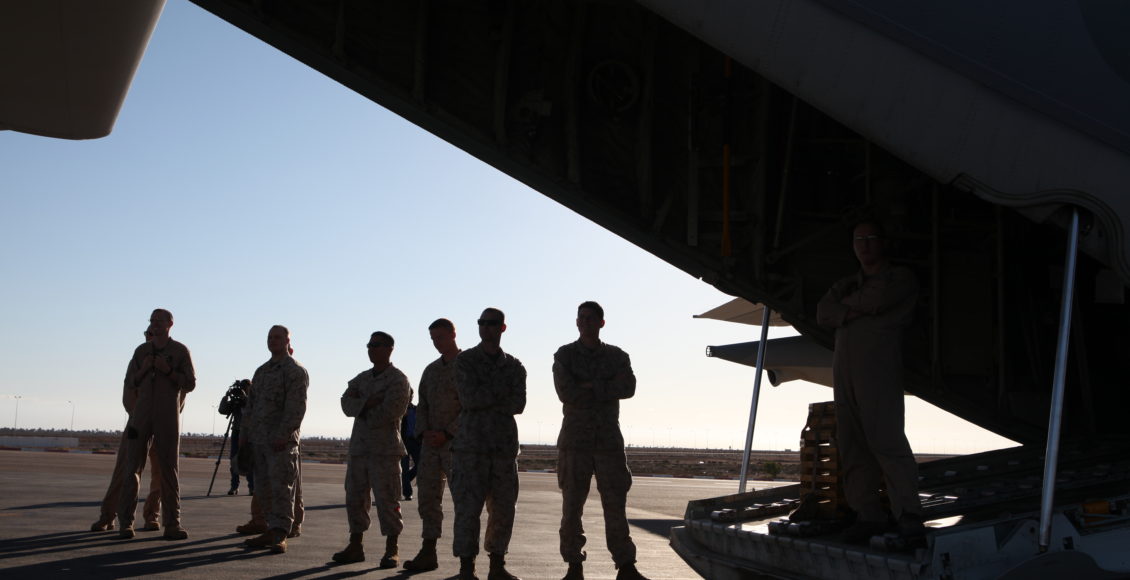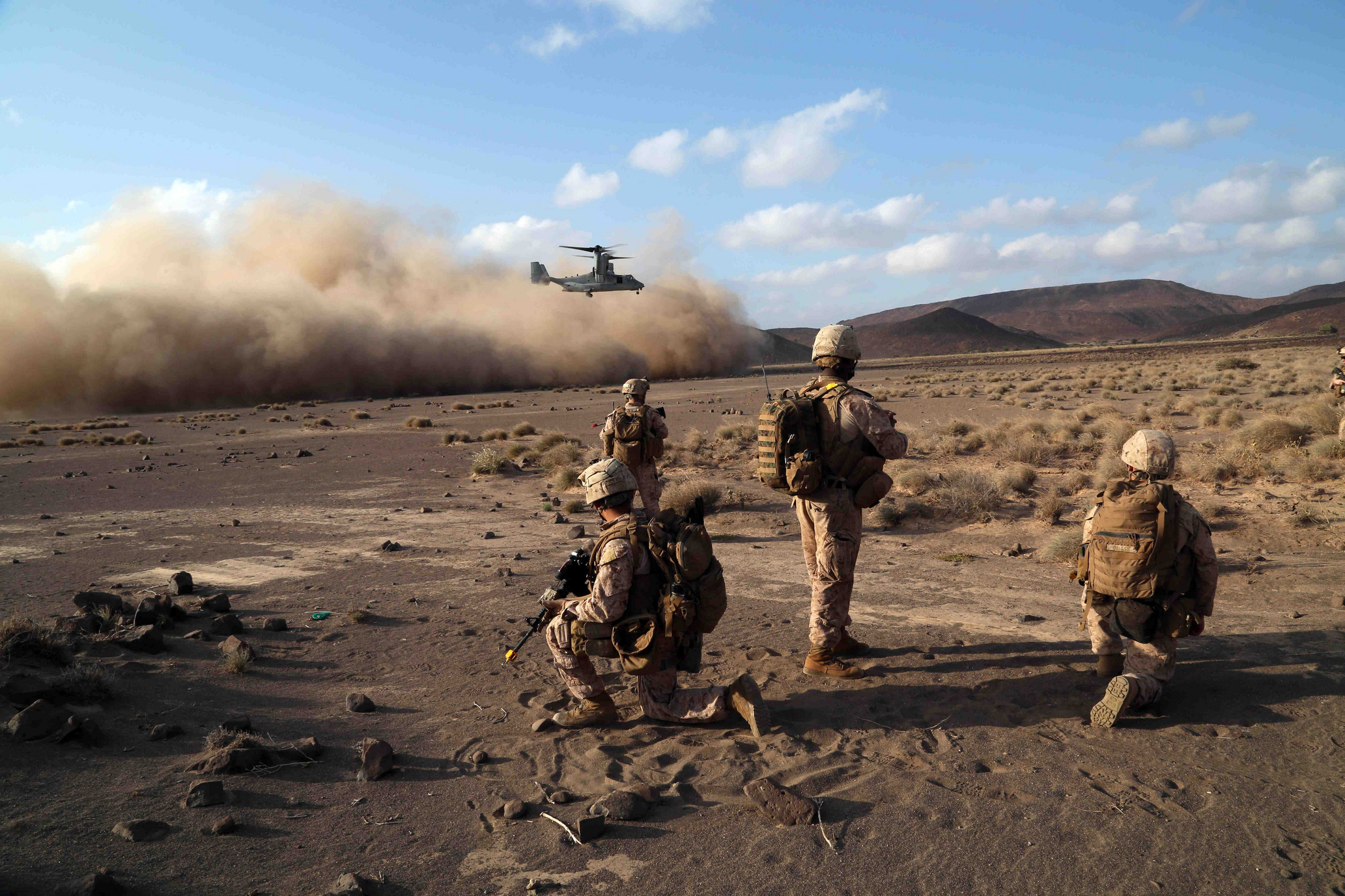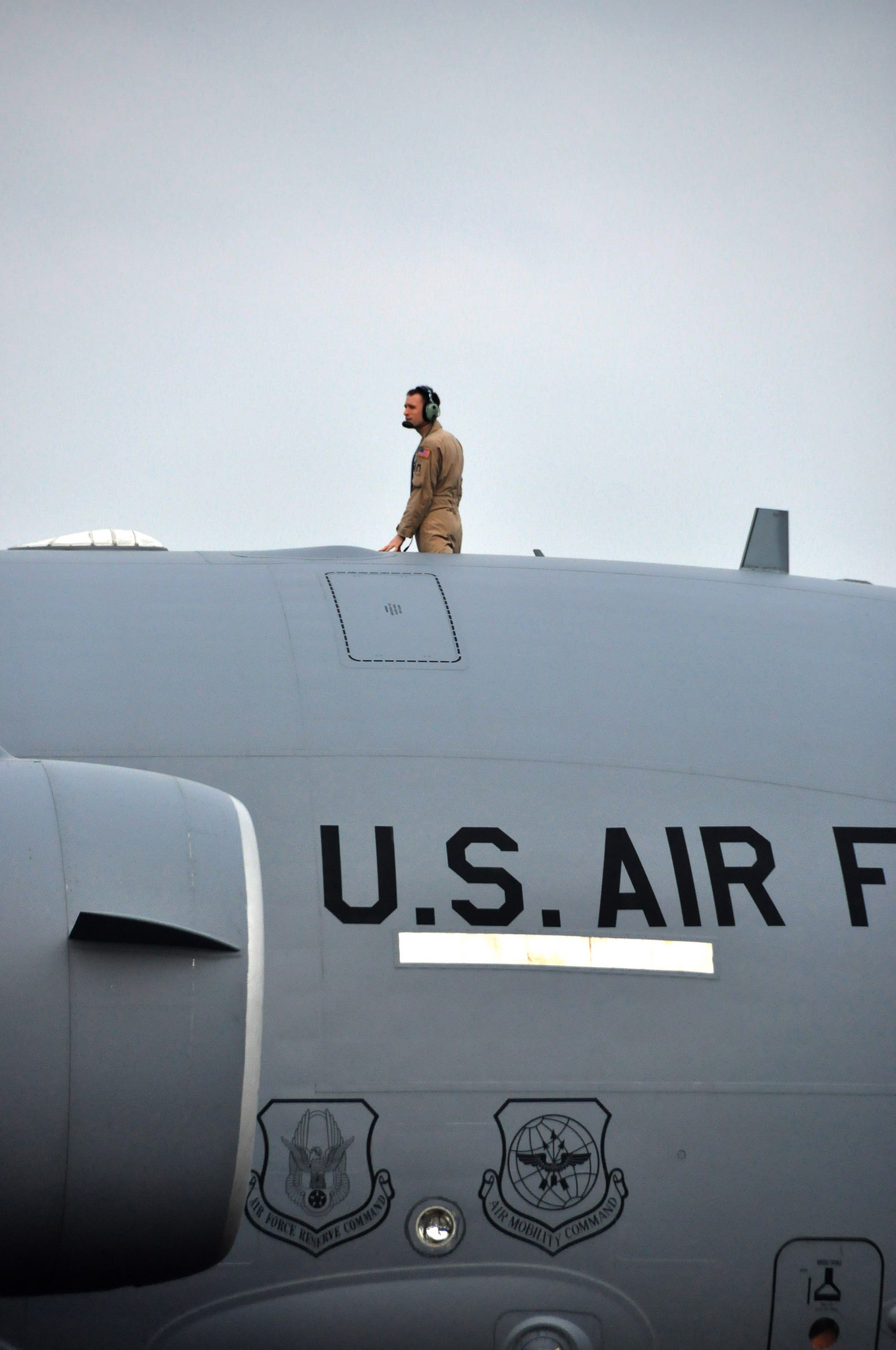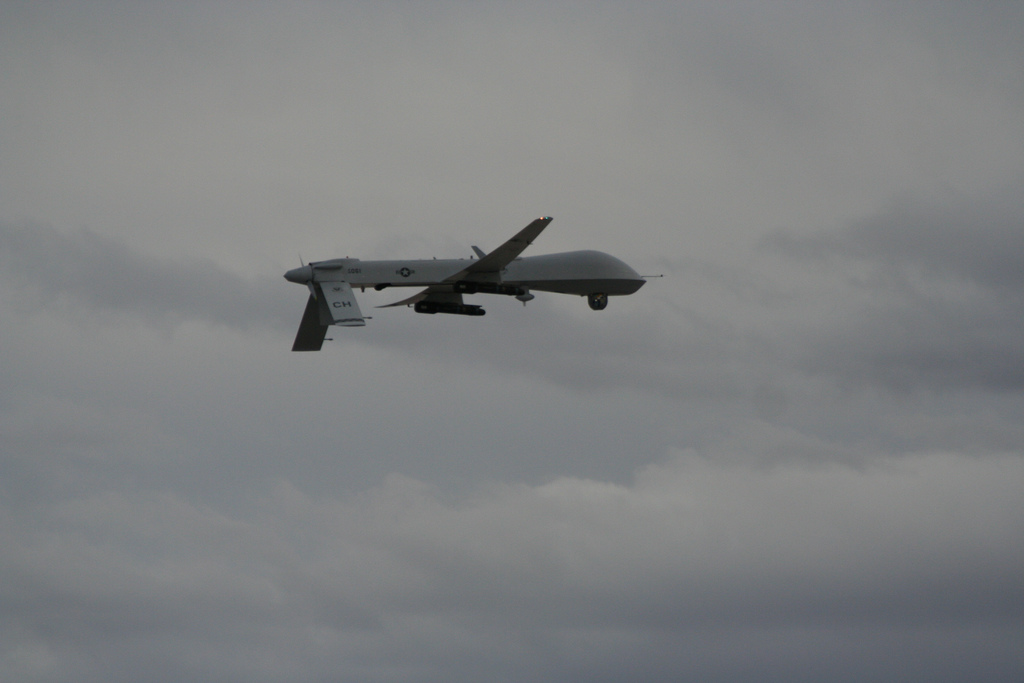What is the U.S. Doing in Africa?
 U.S. Marines wait on the tarmac of a Tunisian airport. https://flic.kr/p/9ovw4e
U.S. Marines wait on the tarmac of a Tunisian airport. https://flic.kr/p/9ovw4e
The October 2017 deaths of four American soldiers in Niger caused many to ask why the United States had troops in the country, let alone troops engaging in ground operations. In November 2017 a fitness tracker service released a global heatmap of popular exercise routes, revealing fitness bracelet users running laps around remote airstrip locations across Africa. This leak inspired speculation about the locations of previously undisclosed U.S. military outposts, causing many to question why there appear to be so many troops in such vast distribution across the continent. At a time when the United States has announced simultaneous plans to draw back its military presence in the region, while broadening the CIA’s drone operations, the security aims and strategies are worth revisiting.
What Are They Doing and Where Are They Doing It?
The United States’ National Security Strategy explains the approach to Africa as mostly economic, focusing on profit (African markets for US goods and services), and competition with China. In the Department of Defense’s National Defense Strategy, the section pertaining to Africa does not make any explicit reference to China, instead describing the approach as focusing on addressing “significant terrorist threats”. This counterterrorism mandate is more aligned with the professed goals of the U.S. Africa Command (AFRICOM), who’s mission centers around deterring and defeating “transnational threats in order to advance U.S. national interests and promote regional security, stability, and prosperity”.
Established in 2008, AFRICOM is an interagency combatant command of the United States responsible for all Department of Defense operations in Africa and its surrounding waters. These operations are varied, and include training and supporting regional partnerships (which the U.S. maintains with 51 African militaries), but the activities of the command are primarily aimed at countering violent extremist groups operating in Africa through surveillance and intelligence gathering, raids, airstrikes, and other strategies. Among those mentioned are ISIS and its affiliates, al-Qaeda and its affiliates, and Boko Haram. AFRICOM’s “area of responsibility” – the geographic area within which its commander is authorized to plan and conduct operations – is all 54 countries of Africa. Mentioned specifically in their strategy statement is a long list of countries, those containing extremist groups and those nearby, casting a wide net that effectively spans the entire continent.

The United States has long maintained that it has only one permanent military base in Africa, Camp Lemonnier in Djibouti. There are roughly 4000 military personnel currently deployed at Camp Lemonnier, and it is from this base that the U.S. conducts various surveillance operations as well as airstrikes in Somalia and Yemen. But this lone base does not accurately depict the extent of the United States’ military footprint on the continent. The majority of U.S. military installations in Africa are “lily pad” bases, also known as cooperative security locations. These lily pads are secretive and inaccessible outposts, which are classed as “temporary” and thus do not have to be made known to the public. In this case, “temporary” doesn’t necessarily indicate a short duration, and usually means something closer to an uncertain and unspecified length of presence. For example, one lily pad base in Kenya, sometimes referred to as Camp Simba, has been operative for about a dozen years. In 2016 when announcing the deployment of an additional 300 troops to Cameroon, Obama explained that the forces “will remain in Cameroon until their support is no longer needed”, a vague statement characteristic of much of the lily pad strategy.
The U.S. has had lily pad installations in Uganda, Burundi, Tanzania, Ethiopia, Egypt, The Seychelles, Burkina Faso, Ghana, Liberia, Senegal, Mauritania, Chad, among other countries, and maintains at least some military presence in 50 out of 54 countries in Africa. Following Djibouti, the most significant installations in terms of boots on the ground are Niger, with approximately 800 deployed personnel, and Somalia with roughly 500. Niger is considered by U.S. officials strategically important in the “war on terror”, and it is from their installations in the country that they target groups such as Boko Haram and al-Qaeda affiliates operating in the region. The U.S. maintains a presence in Somalia to “neutralize al-Shabaab“, and the number of troops on the ground doubled last year, bringing it to the highest level since before the 1993 “Black Hawk Down” American casualties.
African Responses to AFRICOM
The vast distribution of lily-pad outposts are not only extremely expensive, they are also in some ways sovereignty infringements. No African country has been willing to house it, so AFRICOM keeps its headquarters in Germany, and the command has been met with resistance in many African nations. Following the announcement of its creation in 2007, regional organizations were largely united in opposition to AFRICOM and the prospect of putting its headquarters in Africa; the fourteen-member Southern African Development Community (SADC) and the fifteen-member Economic Community of West African States (ECOWAS) were decisively opposed to AFRICOM’s creation. The Community of Sahel-Saharan States (Cen-Sad) stated that it “flatly refuses the installation of any military command or any foreign armed presence of whatever country on any part of Africa, whatever the reasons and justifications”. Numerous leaders and government officials also spoke out against the command, with Zambia, Nigeria, and South Africa among the most vocal.
Additionally, many nations were wary of the true objectives of AFRICOM due to the United States’ failure to confer with the African Union (AU) while the command was being formed. It was viewed by many as an endeavour that sought to supplant the AU’s authority in matters of security on the continent. In 2011 during the Libyan crisis, this apprehension was confirmed when AFRICOM rejected and ignored the AU’s position that sought negotiations and a political solution to the conflict, instead coordinating a NATO force and orchestrating a regime change that resulted in the assassination of Muammar Gaddafi.
Responses from domestic populations have been largely critical as well. Skepticism of the United States’ true intentions, concerns that AFRICOM will invite terrorism and other security risks, and opposition to foreign intervention in general, are all commonly cited criticisms in media coverage from a number of African countries. Even when the official position of the government is supportive of AFRICOM, the rest of the population is not necessarily in agreement. For example, while the Cameroonian government welcomed U.S. military leaders for a visit in 2008, protests erupted and caused the U.S. Ambassador to cancel her visit. More recently, thousands protested in Ghana earlier this year following an agreement with the U.S. military to expand its role in the country. Carl LeVan analyzed continent-wide media responses to the command and connects increased aid dependence with political support for AFRICOM, and increased economic independence with greater criticism, which suggests that nations that could afford to refuse a U.S. military installation, would.
The Department of Defense categorizes the largely negative reception of AFRICOM as an “image problem”. But considering the United States’ history in Africa of waging proxy wars under the guise of preventing “the spread of communism”, skepticism of such an invasive and far-reaching presence in the name of “security” and “combating extremism” is far from outlandish. The lily-pad basing strategy allows for immense flexibility as well as opacity in operations, and the distribution of military installations on the continent seems better understood as part of a neocolonial pursuit to use America’s military presence in order to maintain dominance within Africa. In light of increasing Chinese economic influence throughout the continent, the United States’ quiet expansion of its military power in many ways resembles a second “scramble for Africa”, and thus the legitimacy of their presence in general is deeply suspicious.

Expanding Drone Wars and Strategic Efficacy
The immense network of lily pad outposts overlap with an expanding military drone and surveillance network. In Niger, this expansion takes the form of a $100 million drone base under construction in Agadez, Niger. Last year the Nigerien government gave the United States permission to fly armed drones out of a Niamey airport, marking an increase in strikes targeting al-Qaeda affiliated militants in southern Libya.
In Somalia, there has been a dramatic escalation in air efforts targeting al-Shabaab, with the number of strikes in the country doubling from last year. In 2017 the Trump administration declared parts of Somalia “areas of active hostilities”, permitting Special Operations Forces to take an offensive position targeting members of al-Shabaab.
Additionally, the administration loosened Obama-era standards for airstrikes and ground raids. The administration removed the requirement that targets must pose a threat to American lives, the requirement of interagency vetting of proposed strikes, and the requirement of “near-certainty” that no civilians would be killed. The new standards permit some civilian deaths if “deemed necessary and proportionate”.

With these escalating conflicts in Libya and Somalia, as well as the recent deaths of American soldiers conducting ground operations in Niger, it seems that the U.S. is engaged in a number of wars on the continent – or at least something a lot more significant than surveillance, training, and support programs. These engagements are justified through the Authorization For Use of Military Force (AUMF), passed by Congress three days after Sept. 11th2001. The AUMF grants the U.S. military and security agencies sweeping power to pursue what they regard as terrorist threats with little oversight or public scrutiny.
As these activities are allegedly aimed at disrupting violent extremist organizations, the efficacy of their current strategy of achieving said goals deserves some scrutiny. With the expanding drone wars in both Libya and Somalia, there comes the worry that drone campaigns may work as recruiting tools for targeted extremist groups, rather than degrading them. For example, in southern Yemen, as well as in Pakistan, U.S. drone strikes stimulated increased sympathy for al-Qaeda among civilian populations.
A parallel concern is that socioeconomic factors are more important in inspiring support for extremist groups than ideology, and thus a threat-based military approach might be misguided. One study in Nigeria found that in motivating recruits to join Boko Haram, unemployment is a more important factor than religiosity. The United States Agency of International Development (USAID) provides foreign aid and development assistance, and a correlation has also been found between the visible presence of USAID initiatives, and lower levels of support for Boko Haram.
The Trump administration has recently announced a drawback of troops in Africa, although defense officials report that this plan will reduce the number of AFRICOM personnel by less than 10%. This reduction obscures a broader pattern of militarization, where budget cuts target USAID and other humanitarian and developmental assistance programs while prioritizing spending on security initiatives and the Department of Defense. By contrast, for the 2018 fiscal year, the Republican Congress authorized a defence budget $37 billion higher than the Trump administration’s proposed $603 billion, and with additional “war funding” included, is $100 billion more than the budget that passed in 2017. Academic research, trade, diplomacy, and investment are all important factors in maintaining social and state security, and are increasingly being supplanted by growing military power. This strategy expands hard power projections at the expense of the softer forms of power that arguably do more to address the root causes of violent extremism.
In this way, the United States’ approach to counterterrorism operations in Africa appears unbalanced, and risks drawing the country into broader and increasingly opaque conflicts throughout the continent while having little lasting impact on the spread of violent extremism in its various forms and iterations. All of this raises the question if the United States’ operations really do address and reduce global terrorist threats, or if their presence on the continent is self-justifying. If the aim is in fact counterterrorism, the uncertain effects of drone warfare on extremist groups, along with the military’s eclipsing of humanitarian initiatives such as USAID, seem to indicate at the very least a need for a strategy overhaul. But if the goal is imperial-scale occupation and power projection to counter Chinese economic influence, then the heavily militarized and flexible lily-pad approach appears to put the United States in an advantageous, but seriously unjustifiable and illegitimate position.
Edited by Luca Brown
